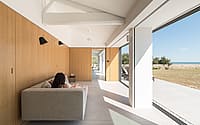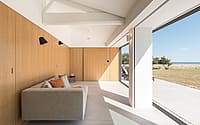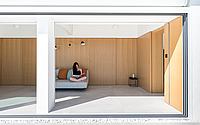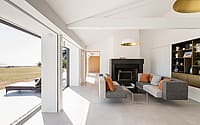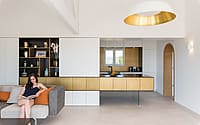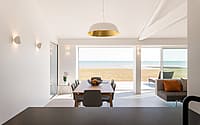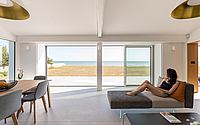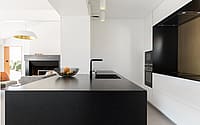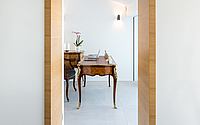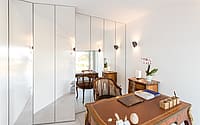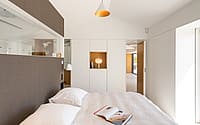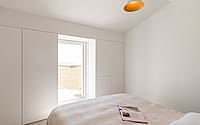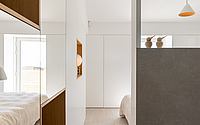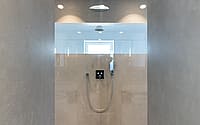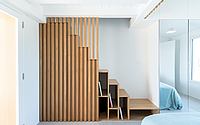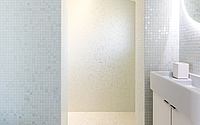A House with a View by Martins Afonso Atelier de Design
A House with a View is a beautiful sea front home located in Sainte-Marie-de-Ré, France, designed in 2020 by Martins Afonso Atelier de Design.

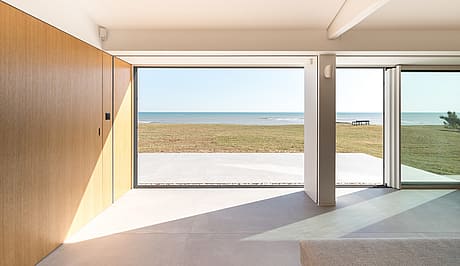
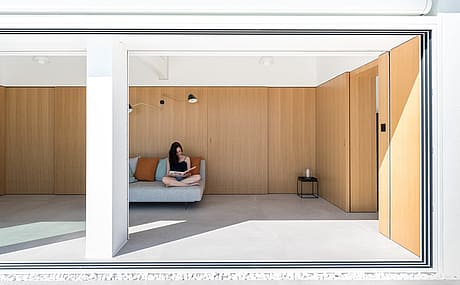
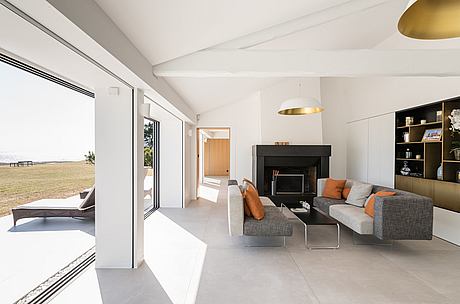


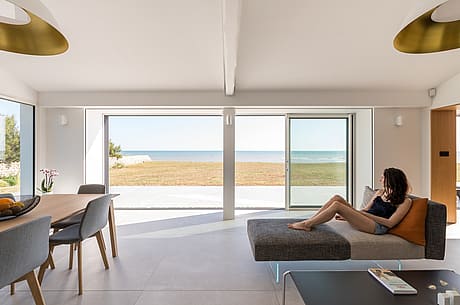
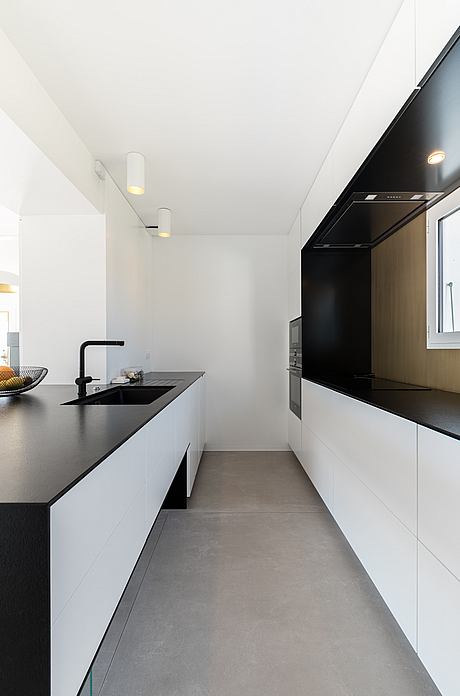
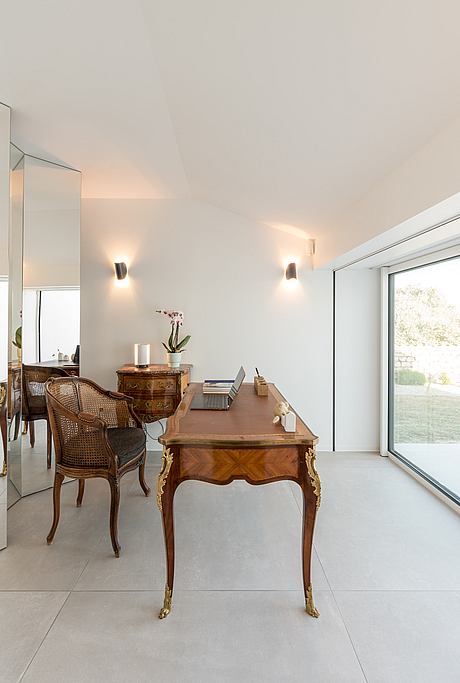
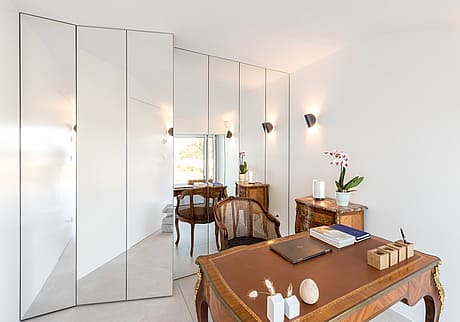
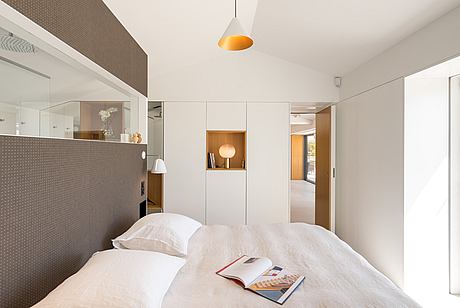
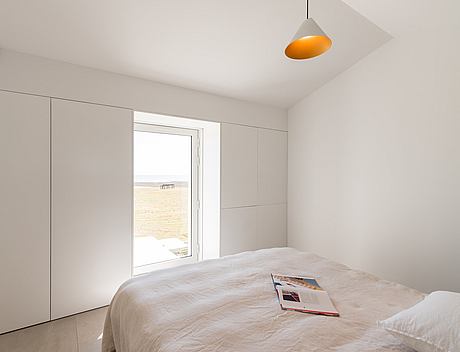
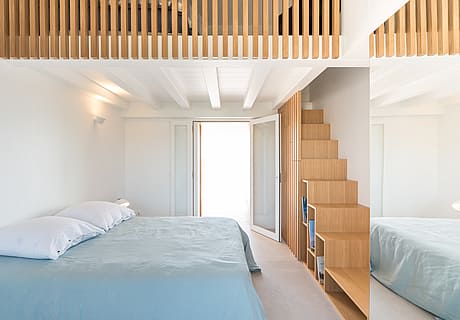
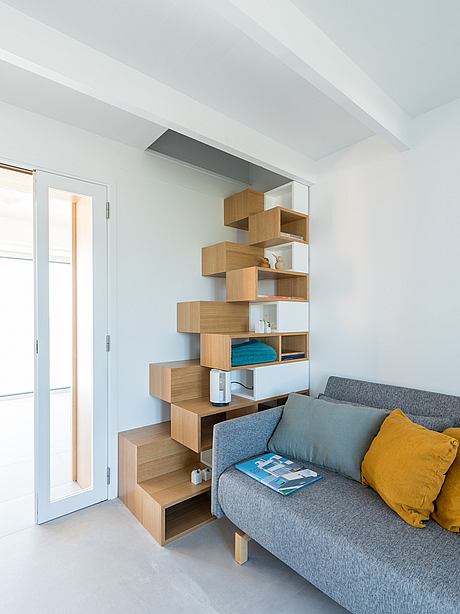
Description
In the house, the living space unveils through views that change with the winds and tides as a living and breathing postcard. The project emerges by catching these moments, where each new architectural fragment prints and dances in its context.
Firmly anchored on the seaside, on a sandhill in the south of L’île de Ré[1], this traditional house opens entirely on the ocean. With a strong setting, the challenge of this renovation was to create a new living space using an aging existing structure with incredible potential.
“When the inside invites itself outside”
The owners wanted to refurbish the house to make it more suited to their way of life, more comfortable, and above all, per their tastes. The project was based on a complete renovation of the house’s interior and on a redefinition of the openings in the outside space.
The connection between inside and outside spaces is at the heart of the project. It is one of the initial elements which change how one views the whole inhabited space.
We have considered the indoor facilities to create new identities for these areas and build privileged relationships with the outside.
This work of sequencing is defined and underlined by the implementation of the wood, contrasting with a mineral floor. These materials make up the main thread between different rooms in the house and ensure continuity with the outdoors.
This house was thought for a couple but was also meant to be relaxing and pleasant during family visits.
With that goal in mind, the relaxation area at the heart of the house connects the dining room, the kitchen, the living room, and the bedrooms through an oak ribbon which gives access to the different areas. The bedrooms, hidden behind the ribbon, disappear from the ascendancy of the house previously felt. This feeling is that of a home that can easily fit any lifestyle, thanks to its adaptability.
Some passages and storage are hidden, forming an integral part of the furniture, like the toilets accessible from the living room furniture or the laundry via the secret doors concealed behind mirrors at the back of the office.
In the same spirit, a staircase giving access to an extra bed in one of the bedrooms was thought out with a set of volumes in mind, in Japanese steps to limit its scope, and creating in the process many storages below each stair.
A second staircase was implemented with a wooden lath railing behind which additional storage is hidden.
Numerous details punctuate these clean spaces made of lines nuanced with white, at times mat, satiny, or even shiny. These details are highlighted by such materials as granite or brass wire or by the careful use of oak, evidenced by the creation of sub-doors and sliding doors, along with hollow joints that make the dialogue with the original structure more subtle.
The master bedroom represents and sums up the conceptual outcome adapted to the customers’ use of a restricted space. This room is a sequence of plans, views, and hidden spaces starting by the entrance, before the overall storage facilities and the toilets.
At the center of the bedroom, the headboard sits enthroned like a sculpted stele. Behind it, we find the large shower, accessible from both sides, which leads to an ocean view through a glass banner. A new layer shuts down this well-being space. A wide one-block glass wall separates the shower from the sinks. Between them is drawn a rift, like a crevice opening on a custom-made bathtub, not unlike a wavy ribbon draped with a mosaic of softened black marble, conferring to the space a hammam-like atmosphere suitable for relaxation.
Other details accentuate the spaces, highlighting their use, like a theatrical production.
A smaller and more private bathroom, entirely adorned with white mosaic shaded with mother-of-pearl, creates a peaceful atmosphere, with an attention to detail in the curved forms.
The central kitchen island is one of the masterpieces of the house, like a sculpture made of black granite and old brass. It creates the articulation between the kitchen area, the dining area, and the living area. The block anchored in the living room furniture lengthens into the void, standing only thanks to a glass frame. To highlight this striking contrast of seeing a block of stone facing the notion of lightness surprises as much as it impresses.
The assembling and the beveled treatments of granite that welcome the brass doors reinforce this massive aspect.
Everything was conceived with attention to detail so that each architectural element could find its space. The ocean invites itself into each room and creates an enchanting scene welcoming us to calm and contemplation.
Photography by Mickaël Martins Afonso
Visit Martins Afonso Atelier de Design
- by Matt Watts